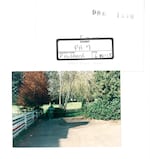Jesse Johnson had been in prison on a murder conviction for roughly seven years before anyone asked Patricia Hubbard what she saw on March 20, 1998.
When defense investigators knocked on her door in 2011, she did not know Johnson had been convicted of killing her neighbor, Harriet Thompson. But Hubbard did remember the night Thompson died clearly.
“In the early morning hours before the murder, there was screaming and yelling with obscenities,” she said in a June 2013 affidavit to Johnson’s defense team. “When it all stopped I saw a tall, white male with straggly hair go running from the scene. I remember this fact because it was in the early morning hours of that same 24-hour period that the police came.”
Back when Thompson was killed, Hubbard worked as a manager at a Chiquita fruit cannery in West Salem. She was on her porch the morning of the murder smoking a cigarette after returning home from a long shift. Photos collected by the Salem police in 1998 from Thompson’s driveway show the line of sight to Hubbard’s home, a blue house in the right side of the photo looking south along the driveway.

A view facing south along Harriet Thompson's driveway in 1998. Part of Patricia Hubbard's former Salem home is shown in the far right of the picture.
Documents obtained via public records request / OPB
Police investigators also took a photo looking north along Thompson’s driveway and into the athletic field attached to Morningside Elementary School.
This north-facing view would have been similar to what Hubbard would have seen in the early morning hours of March 20, 1998.

A court document shows a view looking north down the driveway next to Harriet Thompson's apartment in 1998. Bushes and trees on the rear of the property bordered an athletic field for Morningside Elementary School. In the early morning hours of March 20, 1998, Patricia Hubbard said she saw a white man run north away from Thompson's apartment and toward the school.
Documents obtained via court records
By Hubbard’s account, the white man she saw running from Thompson’s place after the sounds of a fight sprinted down this driveway, turned left and then ran north along 12th Street. Hubbard said in her affidavit that the white man she saw that night was “one of the more recognizable individuals” she saw coming and going from Thompson’s residence in the days and weeks before her death.
“At the house, he was very loud and always the aggressor when he was there,” she said in the document. “His voice carried more than anybody else’s.” That man’s voice was the one she heard the night of the killing, Hubbard said.
She also said she saw a Black man walk down Thompson’s driveway after the attack, but had not seen him arrive.
“I’m not sure that he came from the house. He looked like he might’ve been sick or drunk,” Hubbard told investigators, adding the man walked casually down the driveway and eventually north along 12th. “He wasn’t in any big hurry.”
More than a decade after the murder occurred, members of Johnson’s defense team would show Hubbard various mugshots of men in Salem’s drug scene, but she did not see the exact person she had seen that night in those lineups. When shown a photo of Johnson, she said she did not think he was the Black man she saw that night in 1998.
Hubbard eventually claimed that when she approached police officers investigating the murder, they dismissed the information she provided about seeing a white male run from the scene. She also said that a Salem police detective made racist remarks when discussing the investigation with her — an allegation Marion County prosecutors have disputed.
What is undisputed is that her home on Shamrock Drive had a clear view of the entrance to Thompson’s apartment.
Ultimately, Hubbard’s testimony proved crucial to getting Johnson’s conviction reversed. The Oregon Court of Appeals found Johnson’s original attorneys had delivered such inadequate defense that his conviction had to be overturned.
“Adequate trial counsel would have recognized the importance in a capital murder case of contacting the people nearby who were likely to have information about the victim, people associated with the residence, and the events of the night in question,” the appellate judges wrote in their ruling on the case.
Listen to all episodes of the “Hush” podcast here.